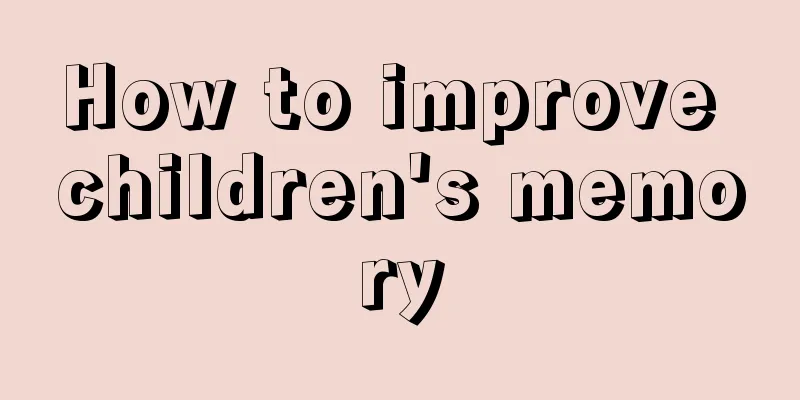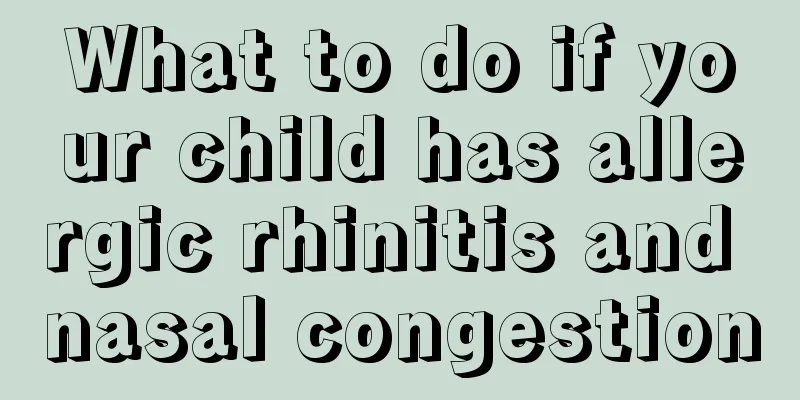The baby's body is hot but the forehead is not hot

|
As we all know, babies' physical development is not very complete, and they need to slowly adapt to all external environments. During this process, babies are prone to colds and fevers. At this time, mothers need to relieve the baby's symptoms according to the specific situation. If the baby's fever is so severe that the mother cannot solve it herself, the baby should be taken to the hospital for examination and treatment in time. If the baby's body is hot but the forehead is not, it should be a respiratory infection and inflammation, which is a phenomenon of a cold. The main cooling methods are medication and physical cooling. If the child's body temperature is within 38.5 degrees, the body temperature can be reduced to normal by drinking more water. It is generally not recommended to use antipyretic drugs; if the body temperature is high and exceeds 38.5, drink more water and take antipyretic drugs such as ibuprofen, naproxen, etc. Physical cooling for baby's fever 1. Cold and wet compress on the head: Soak a soft towel in 20℃ - 30℃ cold water, squeeze it slightly to prevent dripping, fold it and place it on your forehead, changing it every 3-5 minutes. 2. Wipe with warm water or take a warm bath: Wipe your child's head, armpits, and limbs with a warm, wet towel or give him or her a warm bath, scrubbing the skin more often to promote heat dissipation. 3. Ice compress: You can use a small amount of ice compress appropriately, and apply ice or cold compress to the baby's forehead, both sides of the neck, armpits, groin and other large blood vessels. But be sure to wrap a layer of cloth around the ice bag to prevent local frostbite on the baby's skin, and babies under 6 months old should not be given ice compresses. There is still much controversy about the pros and cons of this approach. It is generally believed that ice compresses do more harm than good, because they may cause the capillaries in the baby's skin to contract, hindering heat dissipation and causing the body temperature to be higher. Especially if accompanied by chills or shivering, ice compresses should not be used. 4. Alcohol bath: This approach has been abandoned. Babies' skin is very thin and alcohol is highly permeable, so it may be absorbed into the blood through the skin. Moreover, alcohol baths can also irritate the skin, causing capillaries to contract, hindering heat dissipation, and causing the body temperature to be higher. 5. Drink plenty of water and don’t take any medicine casually. When the fever is high, breathing speeds up and sweating causes the body to lose a lot of water. Therefore, parents should give their children plenty of water when they have a fever, increase urine volume, and promote the excretion of toxins in the body. |
<<: 3 month old baby head circumference
>>: Newborn vomits yellow-green liquid
Recommend
Simple method to judge the symptoms of bone fracture in children
Children are lively and active by nature. While p...
What to do if a baby has a rash
In life, we all attach great importance to the ph...
How much milk does a four-month-old baby eat?
My baby, who is over four months old, has started...
What should I do if my baby has allergies at the corners of his mouth? Parents need to understand these methods
When the baby has allergies at the corners of the...
Treatment of scab on baby's head
The incidence of scabs on babies' heads is ve...
Reasons why baby vomits sour milk
Many parents often find that their babies spit up...
What should I do if my baby stops drinking milk and refuses to eat formula?
As we all know, breastfeeding is generally consid...
How to treat tooth decay in children
For children, if they do not pay attention to ora...
What are the symptoms of mite allergy in children?
Children's skin is more sensitive than that o...
Baby's face has small red pimples
When babies are young, their bodies are relativel...
What are the sports for children?
What kind of sports are there for young children?...
What to do if your child has a bleeding nose
Children are the hope of every family, and the he...
What to do if your 6 month old baby has diarrhea
It is very common for 6-month-old babies to have ...
2-year-old baby breakfast
Babies may show anorexia, poor appetite, and be p...
What causes children to grind their teeth?
Children's teeth grinding is a problem that w...









